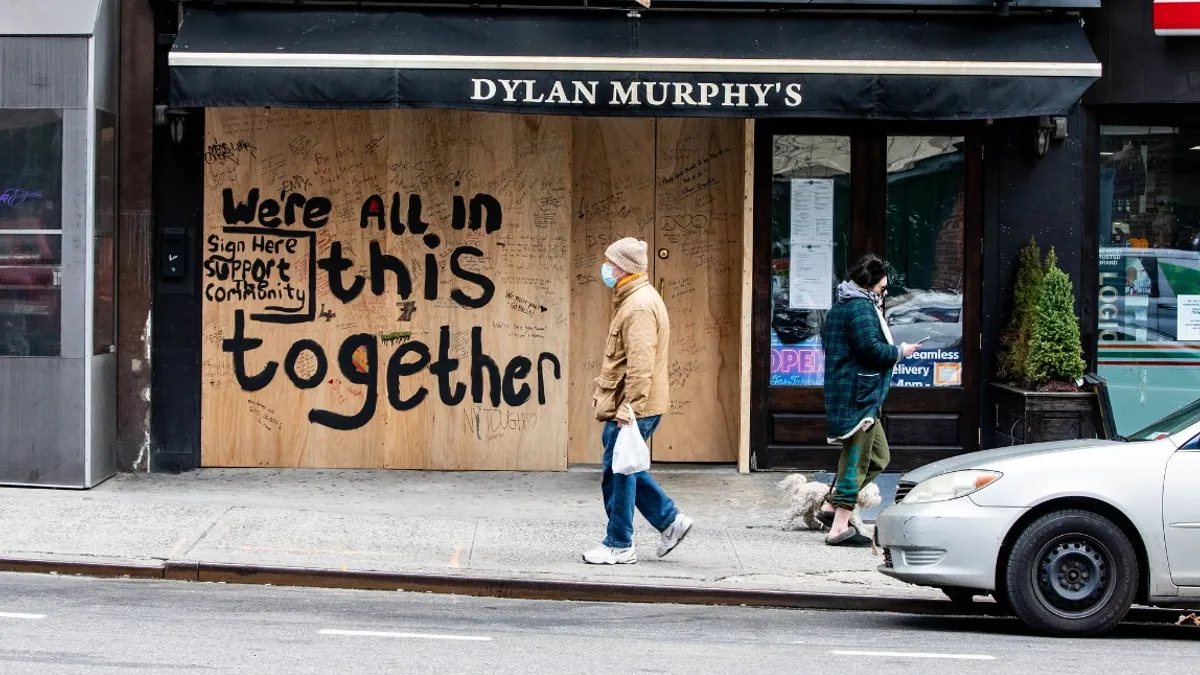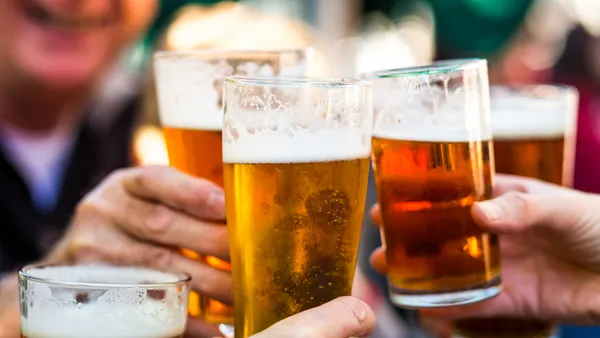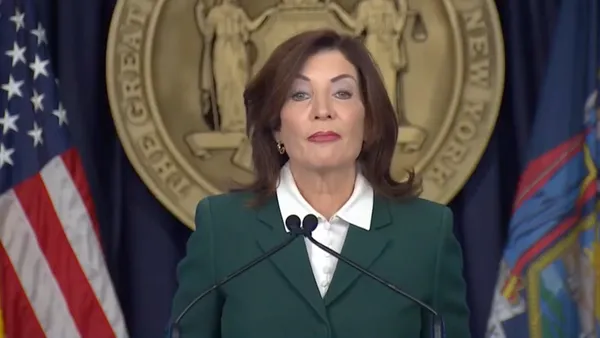Dive Brief:
- Urban areas have faced the most restaurant closures during the novel coronavirus pandemic, according to Datassential findings shared in a webinar last week. In these markets, 11.2% of restaurants are temporarily closed and 3.7% are permanently closed, compared to suburban areas (7.2% and 3.4%, respectively) and rural areas (4.7% and 2.7%, respectively).
- Cities with a high variable population — when more people work in a city than live in a city — have been most vulnerable to restaurant disruption. For example, The Chicago Loop, which has a resident population of 3,098 compared to a worker population of 126,936 (a variable population ratio of 41) has experienced a restaurant closure rate of 40% during coronavirus compared to the U.S. average of 11.5%.
- Datassential managing director Jack Li said restaurants in these areas will face further disruption in the short term from recent protests, which could set them back even farther back in terms of recovery. "Urban areas are probably going to be hardest hit in each one of those regards," Li said on the webinar. "[Will] what's happening right now have a long-term impact on restaurants? Maybe. We just don't know."
Dive Insight:
It's possible that the combination of coronavirus concerns and recent protests, which have been marked by police violence and property damage, could diminish consumer interest in dining out, even as many states ease their social distancing restrictions. But as of June 1, only 49% of American diners said they were avoiding eating out compared to a high of 68% the second week of April, according to Datassential.
Diners are also currently motivated to order from restaurants during these uncertain times to support local business, per Datassential research. Thirty-six percent of consumers said they order from restaurants during shelter-in-place to support local restaurants, compared to 40% who did so because they have a specific craving and 32% who wanted to buy food they can't make at home.
This sentiment is expected to carry through to the other side of the pandemic. Thirty-five percent of diners said helping restaurants and the economy recover would motivate them to spend more on eating out, compared to those who would do so to socialize (25%) and eat food they can't make at home (24%).
While this show of support could help restaurants weather current storms and recover once they subside, there will still be major changes in consumer behavior that could prove challenging — for urban markets especially.
Lunch is traditionally the busiest daypart for restaurants, Li said, but 35% of diners report they will continue to avoid peak times at restaurants even after shelter-in-place restrictions have been lifted. This could flatten the restaurant daypart curve, which could be disruptive for urban restaurants that rely on the lunch rush from business professionals for the bulk of their sales.
Experts also predict that the pandemic will be a sea change for the normalization of remote work, which could reduce the amount of foot traffic in these urban markets. Forty-eight percent of people surveyed by Datassential think their employer will allow or already allows work from home, and 75% of people want to work from home at least some of the time when shelter-in-place orders are lifted.
But when Datassential asked consumers what they are most excited to do once social distancing restrictions ease, 33% said dining at their favorite sit-down restaurant — coming second only to visiting family they couldn't see during the pandemic (36%) and beating out getting a haircut (25%) and even going on vacation (24%), which could bode well for the industry despite present and future challenges.
To keep up with all of our coverage on how the new coronavirus is impacting U.S. cities, visit our daily tracker.













